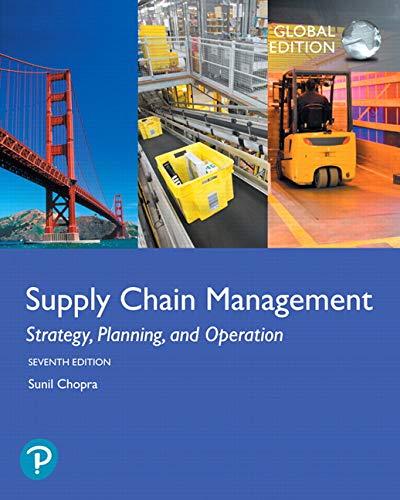Skycell, a major European cell phone manufacturer, is making production plans for the coming year. Skycell has
Question:
 Manufacturing is primarily an assembly operation, and capacity is governed by the number of people on the production line. The plant operates for 20 days a month, eight hours each day. One person can assemble a phone every 10 minutes. Workers are paid €20 per hour and a 50 percent premium for overtime. The plant currently employs 1,250 workers. Component costs for each cell phone total €20. Given the rapid decline in component and finished product prices, carrying inventory from one month to the next incurs a cost of €3 per phone per month. Skycell currently has a no-layoff policy in place. Overtime is limited to a maximum of 20 hours per month per employee. Assume that Skycell has a starting inventory of 50,000 units and wants to end the year with the same level of inventory.
Manufacturing is primarily an assembly operation, and capacity is governed by the number of people on the production line. The plant operates for 20 days a month, eight hours each day. One person can assemble a phone every 10 minutes. Workers are paid €20 per hour and a 50 percent premium for overtime. The plant currently employs 1,250 workers. Component costs for each cell phone total €20. Given the rapid decline in component and finished product prices, carrying inventory from one month to the next incurs a cost of €3 per phone per month. Skycell currently has a no-layoff policy in place. Overtime is limited to a maximum of 20 hours per month per employee. Assume that Skycell has a starting inventory of 50,000 units and wants to end the year with the same level of inventory.
a. Assuming no backlogs, no subcontracting, and no new hires, what is the optimum production schedule? What is the annual cost of this schedule?
b. Is there any value for management to negotiate an increase of allowed overtime per employee per month from 20 hours to 40?
c. Reconsider parts (a) and (b) if Skycell starts with only 1,200 employees. Reconsider parts (a) and (b) if Skycell starts with 1,300 employees. What happens to the value of additional
overtime as the workforce size decreases?
d. Consider part (a) for the case in which Skycell aims for a level production schedule such that the quantity produced each month does not exceed the average demand over the next 12 months (1,241,667) by 50,000 units. Thus, monthly production, including overtime, should be no more than 1,291,667. What would be the cost of this level production schedule? What is the value of overtime flexibility?
Step by Step Answer:

Supply Chain Management Strategy Planning And Operation
ISBN: 9781292257891
7th Global Edition
Authors: Sunil Chopra





